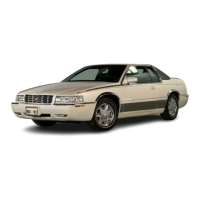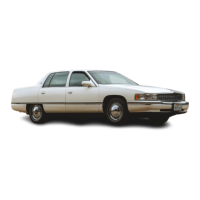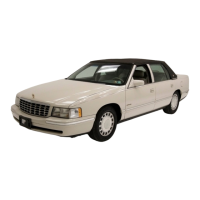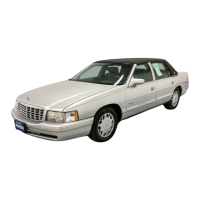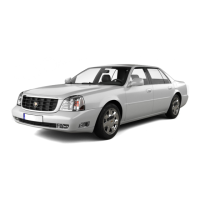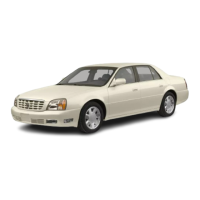Fuse
Usage
WINDOWS
Delayed Accessory Bus (DAB) Relay
SEATS
Horn
Relay, Driver and Passenger
Lumbar IdOut Relays, Driver and
Passenger Upmown Relays
BATT
3
BATT
2
IGN
1”
BATT
1
BRAKES
Steering Column Ignition Switch
Steering Column Ignition Switch
Front and Rear Ignition-
1
Relay,
Oxygen Sensor
1
and
2
Fuse, Fuel
Fuse, Cruise Fuse, DRL Relay, Front
and Rear Fog Lamp Relay (DeVille
Concours Only), Control Power
Back-up Relay, Ignition-1 Fuse, Fuel
Pump Relay
Starter Relay and Solenoid, Park/Rev
Fuse, Park Relay, PCM Fuse,
AC Compressor Fuse and Relay,
Fan Relay
ABS Brake Modulator
COOL
FNS
Cooling Fan Relays
1
and
3
*
Do
not alter OBD
11
related fuses or circuit breakers.
Fuses and Circuit Breakers
The wiring circuits in your vehicle are protected from
short
circuits by a combination of fuses and circuit
breakers. This greatly reduces the chance of fires
caused by electrical problems.
Look at the silver-colored band inside the fuse. If the
band
is
broken or melted, replace the fuse. Be sure you
replace a bad fuse with a new one
of
the identical size
and rating.
If
you ever have a problem on the road and don’t
have a spare fuse, you can “borrow” one that has the
same amperage. Pick some feature
of
your vehicle that
you can get along without
--
like the radio or cigarette
lighter
--
and use its fuse, if it is the correct amperage.
Replace it as soon as you can.
There are two fuse blocks in your vehicle: the engine
compartment fuse block and the rear compartment
fuse block.
6-60
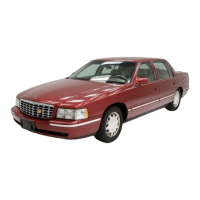
